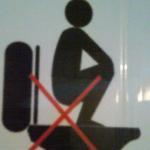-
Posts
190 -
Joined
-
Last visited
Contact Methods
-
Website URL
http://www.markandrews.tv
Profile Information
-
Location
London, UK
-
About
Freelance Production Sound Mixer / Boom Operator in the London area since 2010.
Recent Profile Visitors
1,624 profile views
-
This is actually a great thread in that it highlights the questions about what we put on the mix track and its primary purpose. Surprisingly that's not a universal equal, as plenty of people here have said its best practice to do a mono mix, then we get this opposing opinion. All very valid points. Ive typically kept to a single mono mix on narrative work, unless I know the camera footage audio is used for a specific purpose and thus a split track is a necessity. The same is said of many mixers i know, however this. thread and discussions with others are making me question if an alternative approach would be better. I do have to ask, with plant mics that are placed for dialogue that a boom cannot get to, would they be mixed with the boom track M1 in this workflow, or somewhere else? M.
-
Interesting to see so many votes for standing. Which incidentally is exactly what I prefer to do. I was under the impression the majority sit down and I'm in the minority. Perhaps not.
-
Hi all.. been a while since i've dropped in over here. Someone mentioned it and thought I'd pop over to say hello and see what's been going down. Couple of years ago I had a lot of fun chatting with some fantastic people off this board during "sounderday" chats. I got some great advice and lovely banter. Are they still a regular thing? If so.. where do I go! (PM me if better) Mark.
-

Mozegear TIG Q28 on a job, in a sync test
Mark Andrews replied to Philip Perkins's topic in Equipment
My TIG Q28 worked very well for the first 18 odd months. Now it randomly loses it's TC Jam and resets to 0. Have ditched it for my current job. -

quick... let the speculating begin, again...
Mark Andrews replied to studiomprd's topic in Manufacturers & Dealers
Firstly: It's gonna be awesome! Secondly: It's gonna be really awesome. Thirdly: I have no idea what it is gonna be. ----------- The best guess we have been able to come up with regarding SD development is about flatbed mixers. Not too long ago SD were asking for user input on what features mixers would want on such a device. I'd put money on it being an 8 or 12ch digital flatbed designed to interface with the PIX. Couple of months back I asked an SD rep when they will finally be releasing their new small recorder. He was taken back by the question as he had no knowledge of anything even remotely like that in the pipeline. ~Mark. -

Ken Loach puts out appeal for rare analogue editing tape
Mark Andrews replied to OmahaAudio's topic in Current
I recorded an interview with Ken Loach yesterday for the Making of Jimmy's Hall. He had some really interesting views on film making. It might seem crazy to edit on film in the modern world, but he has some great reasons for it and it's one of those things (along with shooting on film) that probably every editor should have at least a basic knowledge of the processes. The idea that a cut is a cut, and must be thought of carefully as it's hard to undo means a certain discipline is needed, and brings a different approach. It's more thought out and less trial-and-error. In the end that can only be a good thing in terms of getting the cut close to the directors original vision. When questioned about the time it takes to edit on film, he takes about 9-10 weeks from rushes to print, so its about the same as a digital edit. Each to their own, but I see there are advantages to the old fashioned way. ~Mark. -
-

Micron Explorer 100 radio mic. Good enough for broadcast?
Mark Andrews replied to simon forbes's topic in Equipment
I've been using Micron Explorer 100s for a couple of years now. I own three sets. Best thing I can say is.. they do the job. Sound quality is good, as is the range which is up there among the best. We were using 6 explorer 100s in a castle with very thick walls over the summer and got through the shoot unscathed. G3 IEMs would drop out as soon as you moved into the next room, but the radio's worked fine through a few rooms (Shure distro, Shure powered shark fins). Testing with the whips it was not far off performance wise either. What I don't like too much: - Transmitters are on the big side which makes hiding them hard. If you buy a new set now though you can get the small TX for only a slightly higher price. Worth it i'd say. Annoyingly there is no trade in option for the TX. - There is no battery indicator. IPower rechargeables last about 6-7 hours in the TXs, 4-5 in the RXs if they are not powered externally. Generally a change at lunchtime is the way to go, then one towards the end of the day in each unit to be safe. - The lack of squelch as pointed out earlier is annoying. Talent unplug's the TX to step off set and if you are caught off guard then it's lots of loud garbage you hear. -

Argument with the Script Super..
Mark Andrews replied to Richard Ragon's topic in General Discussion
I've seen the process vary on different shoots with different scripties, but it seems to be the following is a rough way I've worked in most cases. Let's assume we are starting at take 1 to make the examples easier. If sound rolls, but camera doesn't. It's still take 1. False Take on sound. If sound and camera roll, but no board is shown it's still take 1. False Take on both. If sound and camera roll, board is clapped by no 'action', it becomes take 1AFS. I still make it a false take, so that 1AFS is labelled as 1, rather than as 2. (SD gear doesn't label as AFS too easily). If "action" is called. Take number always moves on. If both sound and camera roll after an AFS take, but no "action", it becomes take 2 (can't have AFS, AFS). Of course some sets don't use the AFS system, and when they do it's not always that clear cut which is an AFS and a new take. Usually I check after a false take. Certainly need to check the first few times it happens on a set. Rarely have problems when this is used. Speaking about the lower end recorders - I do recall on one shoot having a dispute with a scripty due to filename restrictions on my old DR680 once. The scene numbers were quit long and due to limited characters I didn't have enough digits to name the slate and the take, if the take number got above 10. Trying to explain why I wanted it the take numbers to go to letters after 9 was quite a challenge. Luckily, SD gear is much much easier to work with. ~Mark. -
I have one of the older 50's that I bought second hand a while back. I have encountered the whispery/electrical noise only a few times, and through some vigorous testing I noticed that every time the noise appears the back screw (near the XLR connector) has come slightly loose. A quick tighten and the noise disappears. The annoyance is it's such a low level sound, I typically only notice it during quiet takes and it takes a few seconds to get the appropriate allen key out. It's good to know it's not just my mic, and that replacing the screw should do the trick more permanently. ~Mark.
-

Looking for Oldest Sound Devices Product In Use
Mark Andrews replied to jon_tatooles's topic in Manufacturers & Dealers
I highly suspect my 664 is not in the running for this prize. Well done to Sound Devices on 15 successful years, and I hope to be using SD products for a very very long time to come. ~Mark. -
**stares at his mess of a bag wishing it was like Simon Paine's**
-
Nice, but a white lav would have been less visible.
-
Background for our interviews today!
-
For all UK Sound Mixers/Boom Operators/Assistants: After recent discussions with BECTU representatives, they have agreed to host a meeting for all production sound workers to discuss and address the widening major issues of pay rates, working conditions and lack of respect for Sound. The meeting will take place at BECTU head office, 373-377 Clapham Road, London SW9 9BT on Thursday 9th May, 7:30pm-9:30pm. All are welcome; you do not need to be an established mixer or even a BECTU member to attend and share your views/ideas. This is a serious meeting and it is hugely important for all of us to attend if possible. Please see the flier below and RSVP to BECTU so they can confirm numbers. Hope to see many of you there. ~Mark. Link: http://www.bectu.org.uk/news/1897 (time is incorrect on news page) SoundInviteGraphicMay2013.pdf

.png.279748a58a2b862b7aa5f3b84126e232.png)


